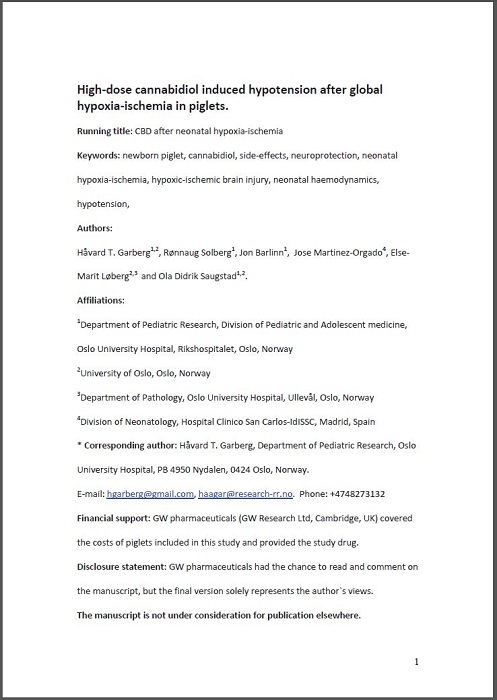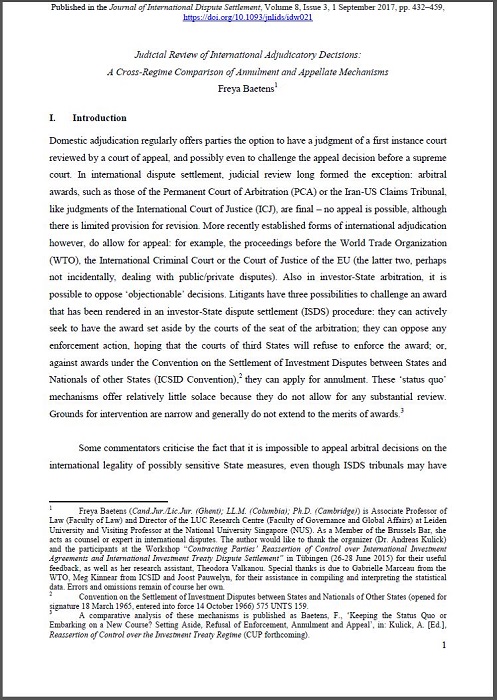On this webpage you will find information about:
- Rights Retention Policy
- Online form for reservation
- Self-archiving: how to submit your article
- Common terms
Rights Retention Policy
UiO has adopted an Institutional Rights Retention Policy (IRRP). The Rights Retention Policy goes into effect on, and including, 01/01/2023 and applies to all manuscripts submitted to scholarly journals.
What does the rights retention policy mean to you as an UiO author?
The Rights Retention Policy ensures that you retain the rights to the Accepted Manuscript Version (AAM) and are free to share and use this version as you wish. This is because UiO has decided that AAM should be able to be shared in UiO's research archive, DUO, with a CC BY 4.0 license immediately after publication, regardless of what the publishers have as self-archiving policy and what publishing agreements are entered into. After making it available in DUO, you can share AAM with the same license.
You have no obligation to provide information about the rights policy to publishers, in the form of e-mail or other documentation. The information on UiO's website is considered as prior notice.
Online form for reservation
Authors who wish to opt out of the rights policy can request this for individual articles. Notification should be sent in a separate online form and does not need to be substantiated. Please note that the article must still be self-archived, in accordance with UiO's instructions to researchers.
Self-archiving: how to submit your article
- Keep an accepted version of your article. Contact the corresponding author if you do not have it yourself. See examples of accepted versions of articles.
- After you have published your article, search for it in Cristin and upload the accepted version (AAM), see instructions. Remember to be logged in to Cristin when doing this.
- NB! Articles that are published open access must also be self-archived.
- The DUO-group at the University Library will check if the article can be published to DUO.
- If an embargo applies, the DUO-group will register this. If your article is covered by the rights retention policy, it can be made available immediately.
- If the final version can be made public, the DUO-group will make arrangements.
Remember: Does your article have a CC license? Then you can upload the final published version in Cristin. If not, you can upload the accepted version (AAM/postprint).

Examples of accepted versions / author versions of articles
The author version is the final draft of the manuscript, including changes made after comments from peer reviewers, without the publisher's final layout.
Common terms
- Post-print, AAM (author's accepted manuscript), accepted version, peer-reviewed version: the final draft of the manuscript, including changes made after comments from peer reviewers, without the publisher's final layout.
- Published version, Version of record (VoR): the final published version with the publishers layout.
- Pre-print, original manuscript, submitted paper: manuscript before it has been peer reviewed. This version can be ammended after the peer review process.
- Embargo: a period of time defined by the publisher which defines when the author can make the article available in an open archive. The embargo can apply for anything from 6 to 36 months, after that the article can be made available in DUO.
- Institutional archive / repository: An open electronic archive for collecting, preserving, and distributing copies of the academic production in an institution.
-
Sherpa/Romeo: is a database of publishers' guidelines for self-archiving. The database does not include all Norwegian journals and publishers. For information on book chapters, go to the publisher's website.
-
CC-license: open licenses describing an agreement between the author (the copyright holder) and the reader (the user). An article with a "CC BY Attribution"-license grants the reader several ways to use the work, while the author retains the right to be named as the work's author (copyright holder). There are several CC-licenses (CC BY, CC BY-NC, CC BY-NC-ND etc.). You can find more information at our webpage about CC-licenses.
More information about self-archiving
Self-archiving and sharing accepted version (AAM/post-print):
When the article has been accepted, you must save a post-print version of the article based on peer reviews.
According to the requirements from UiO and the Research Council of Norway, this version must be uploaded via Cristin to DUO Research Archive. You can wait with uploading your article to Cristin until after it has been published. Often the article will already be registered in Cristin, and you will not have to register information manually. After this, uploading the file can then be done quickly. The DUO-group at the University Library will check all uploads to DUO to make sure that only allowed versions are available.
Can published version be shared and self-archived?
When the article has been published, you will normally receive a file containing the journal’s final, formatted version. You are not always allowed to self-archive this version in DUO, in subject archives, or to share it on other websites. Check the journal’s website, your publishing contract, or in the SHERPA/RoMEO database.
Why you can't archive published version
According to the Copyright Act, you as a writer have the rights to distribute and use texts and other material you have produced. However, when you publish scientific texts in books or journals published by commercial publishers, many publishers require you to sign an agreement that entails transferring the right of exclusive publishing to the publisher.
Rights that are often signed to the publisher include, for example, the right to reproduce, distribute, and publicly display the article in any medium, and the right to authorize others to use your publication.
Other archives
In some subjects it is common to share the pre-print version in a subject archive such as arxiv or RePEc. Some publishers allow this, while others do not. You can find out whether the journal does or does not via the journal’s website. It might also be registered in the SHERPA/RoMEO database.
A lot of people also choose to share their research on social platforms such as ResearchGate or Academia.edu. You should also check the journal’s website to determine whether this is allowed or not.


